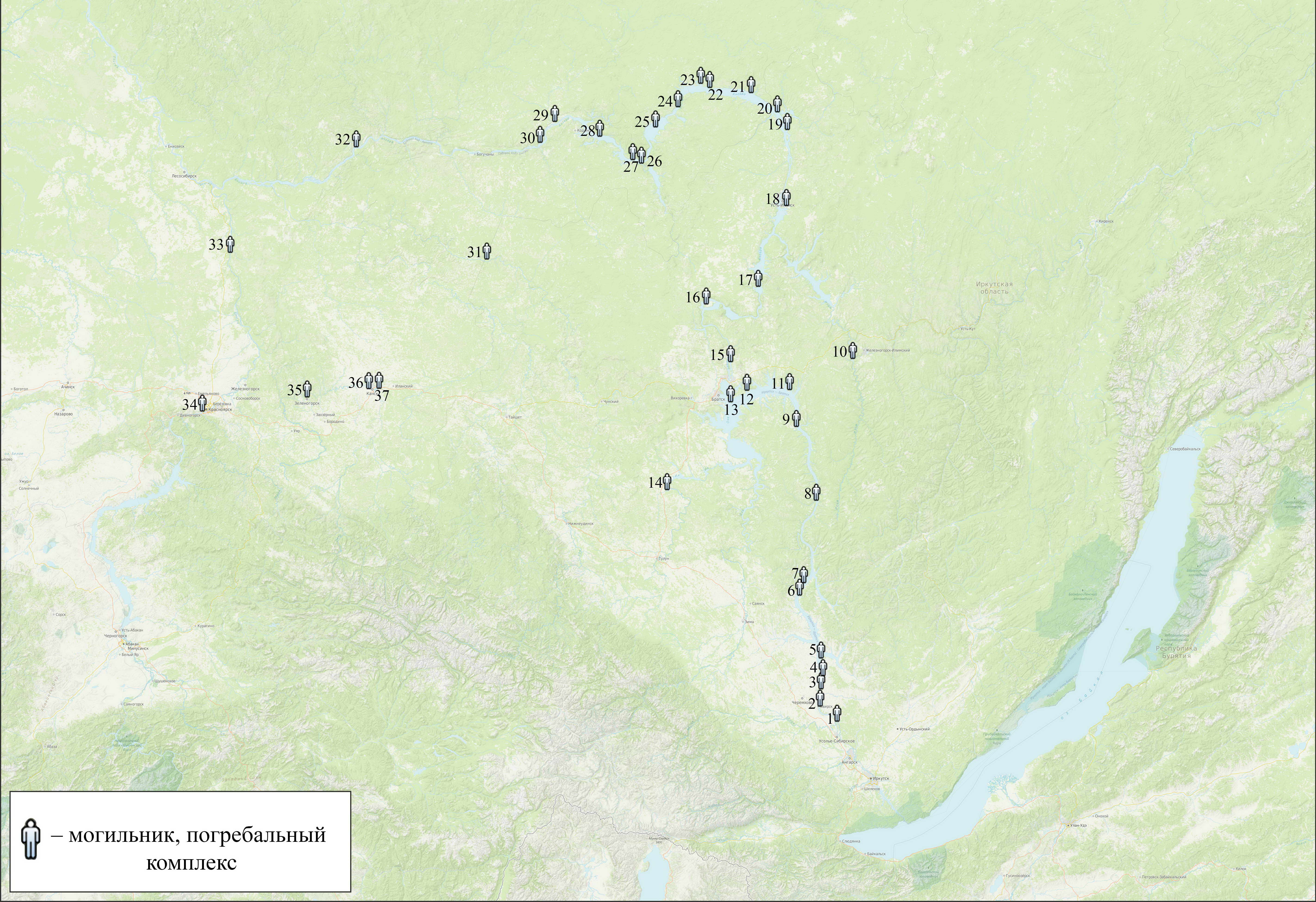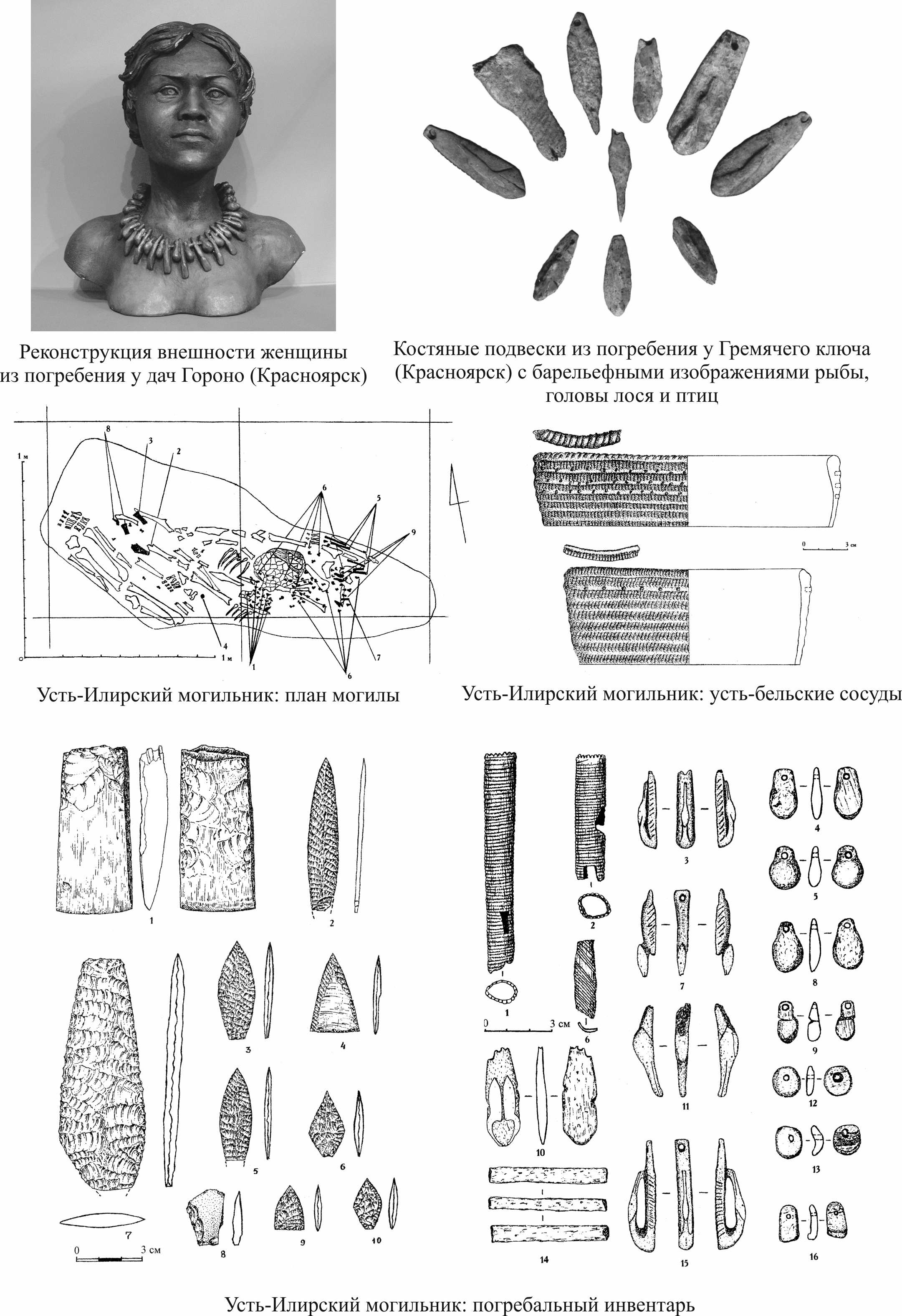Head: Ivan Berdnikov
Participants: Ksenia Krutikova, Sergei Dudarek, Natalia Berdnikova, Natalia Sokolova
Goals, objectives and research plan
The study of the Neolithic of Baikal-Yenisei Siberia, which attracts attention of scientists all over the world, is divided into two main directions – the research of prehistoric hunter-gatherer’s habitation sites and their burial complexes. There is a number of problems, despite the high degree of intensity of researches in Cis-Baikal, especially in the last 20 years. One of them is lack of burials in the Middle Neolithic (~7000–5600 cal BP). This problem needs to be solved, what determines research relevance. The main aim of our project is removal of large lacuna into archaeological knowledge about the Neolithic hunter-gatherers of Baikal-Yenisei Siberia: solving a problem of «hiatus» (a chronological gap between mortuary traditions) by identify Middle Neolithic burial complexes and determination of genesis, position and role of this population in the development of Neolithic cultures of the region. In effect of research the new data about Neolithic burial complexes of Baikal-Yenisei Siberia will be presented. The database of Neolithic burials, which don’t have radiocarbon dates and have differences from burials of Early and Late Neolithic, will be done after analysis of all available information. The feature’s set of mortuary tradition and categories of grave goods will be figured out for this group, also series of radiocarbon dates will be gotten and data about ratio of stabile isotopes (δ13С and δ15N), the analysis of which will demonstrate the nutritional preferences of the Middle Neolithic hunter-gatherers and degree of freshwater reservoir effect (FRE). Two correlation models will be made. First one, intraregional, will be based on comparative analysis of materials and data of selected group with materials of sites of Baikal-Yenisei Siberia. The second one, interregional, will be based on comparative analysis of materials and data of selected group with materials of burials and sites of adjacent territories of North Asia. Relying on this correlation models, patterns, allowing to explain origin and dynamic of Middle Neolithic population’s development in Baikal-Yenisei Siberia, will be found out. This models will be correlated with the chronology which was have already made for burial complexes and sites of the region. Thus, with consideration to given data from results of project, significant adjustments will be added to the concept of development the Neolithic hunter-gatherers’ cultures of Baikal-Yenisei Siberia.
Results of the first stage research
The general purpose of the project is elimination a serious gap in archaeological knowledge about the Neolithic hunter-gatherers of Baikal-Yenisei Siberia – solving the problem of the “hiatus” (chronological break in mortuary traditions) by identifying burials of the Middle Neolithic and determining the genesis of this community, its place and role in the development of the region’s Neolithic. For the successful implementation of research at the first stage of our project in 2020 a methodology has been developed that includes a number of sequential analytical procedures. First of all, information about the burial complexes of Baikal-Yenisei Siberia, which differ from the burials of the Early and Late Neolithic (on the basis of published and unpublished materials) was collected, as well as an analysis of the information obtained and its systematization in order to determine a preliminary list of burial complexes to be dated. Then the analysis of the chronological model for the Neolithic burials of the Cis-Baikal was carried out, which took into account all the ideas and data for the last 140 years. Based on the information collected, a database has been developed that includes information about archaeological sites, burial complexes, signs of a funeral rite, absolute dating data, and storage locations of the collections. The database includes data on 107 burial complexes. For radiocarbon dating and analysis of stable isotopes, 19 samples of anthropological and fauna materials were taken from the burial complexes of the Southern and Northern Angara regions, as well as the Kan-Yenisei region. The first 12 radiocarbon dates were obtained for the Sosnovyi Mys and Zelenogorsk cemeteries, as well as for one burial from the Strizhovaya Gora site. As a result, the Neolithic age of most of the Sosnovyi Mys cemetery complexes was confirmed, which is closer to the Middle Neolithic than to the Early Neolithic. This chronological position of the Sosnovy Mys burials and their difference from the Kitoi burials, in turn, raises the question of the possible participation of the population of the Northern Angara region in the disappearance of Kitoi population from the Baikal region after 7000 cal BP. The burial from Strizhovaya Gora should be dated to the Bronze Age, and the Zelenogorsk burial complexes to the Mesolithic and Late Neolithic. Thus, the goals stated at the first stage have been fully achieved. Additionally, the results of radiocarbon dating and data on stable isotopes of carbon and nitrogen, which were planned to be obtained only in 2021, were received. The results obtained in the first stage will make it possible to significantly adjust the priorities of archaeological research in Baikal-Yenisei Siberia and will undoubtedly be in demand in the study of the Neolithic of Northern Asia. Serial radiocarbon dating, which is planned to be carried out within the next two years, will provide an opportunity to get closer to solving the problem of "hiatus" and develop a more reliable cultural-chronological concept for the region Neolithic.


 РУС
РУС ENG
ENG